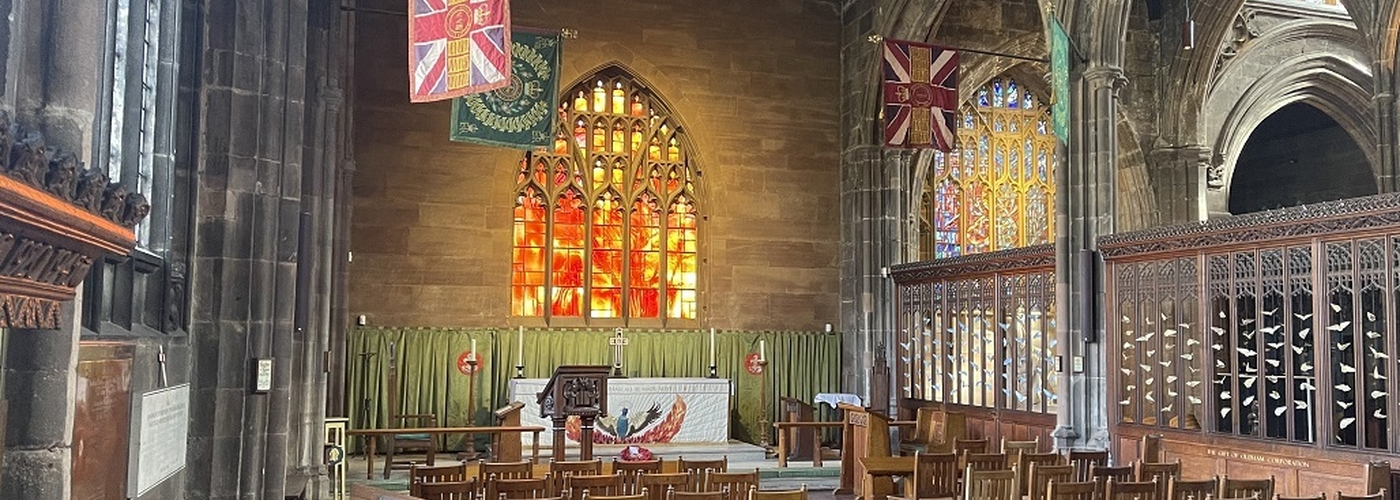Jonathan Schofield and a long history and the seal of a famous king
I meet Henry V last week. There’s a door on the north side of the nave in Manchester Cathedral, it’s antique and studded. Behind a winding staircase leads you to the evocatively named Cathedral Strongroom. I was there to photograph the Henry V charter that led to the building we have today. That’s from 22 May 1421, so it’s the 600th anniversary right now.
Take a moment of stillness and breathe in the atmosphere as the choir voices soar.
To get up close, so to speak, to one of the most famous kings in European history, Henry V (Agincourt, French princess wife, Shakespeare and so on), was stirring. The sense of history was thick in the air. Henry V’s seal, a smiting knight on horseback, could only have been wielded by his hand because there was only one monarch’s seal created for each king or queen. This was to ensure the unique nature of the impression in the hot wax was punched by them and them alone. The seal was the monarch’s bond. If you copied the seal and were caught you would have an unpleasant death. Forgery was High Treason.
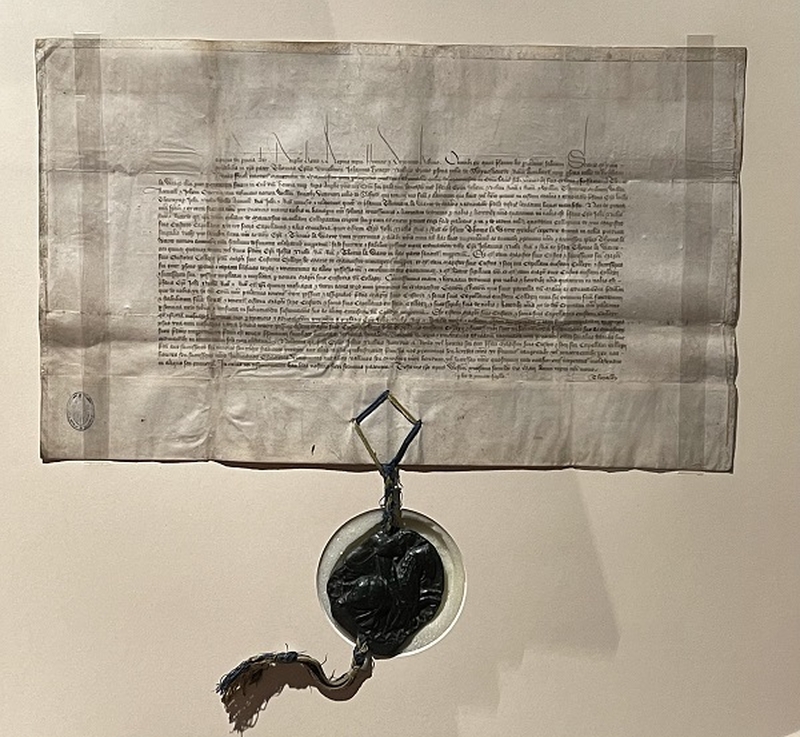
The Charter also led to the construction of the nearby buildings that form Chetham’s School of Music and Library. They were built to house the college of priests.
There are other charters in the strong room, those of Elizabeth I and Charles I. They carry their seals, of course. That’s a great hat-trick, all three monarchs are of primary importance in British history, mighty historical characters. Standing there gazing at them, knowing the seals were made by their hand, is as close to being in their presence as it’s possible to be, especially given the charters were not behind glass in some museum but right there, unguarded, in front of me.
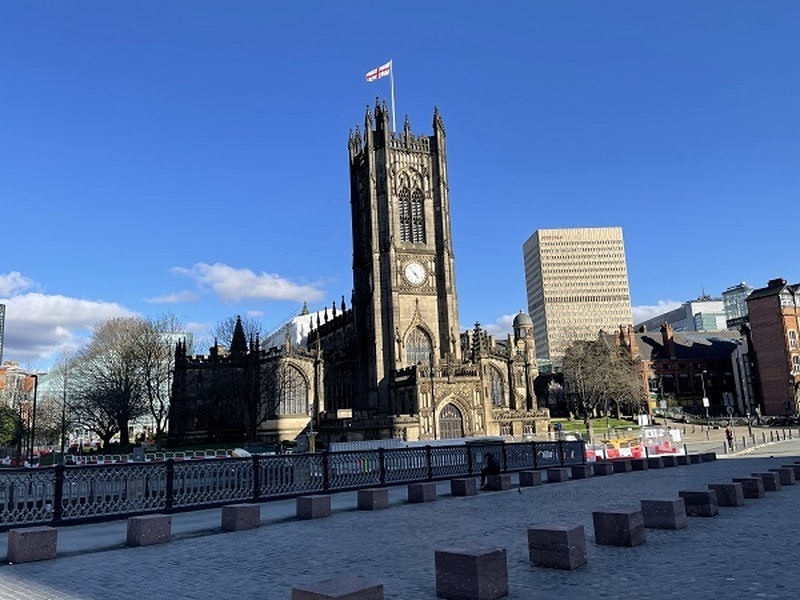
So, 600 years since that charter and the Cathedral is still at the centre of Manchester life. There has been a church on this site for over a thousand years but the building we see today was set in motion by that charter from a Lancastrian warrior king. With his seal and charter, the parish church was raised in status to that of Collegiate Church, one with greater rights and a college of one warden and eight priests.
The present cathedral has a complicated dedication to St Mary the Virgin, St Denys and St George. St Denys is the patron saint of France and is included because, according to one story, the King wanted his claim to the French throne recognised. In 1421 the monarch was Henry V and he’d beaten the French at Agincourt. The Collegiate Church was formally recognised as Manchester Cathedral in 1847.
The expanded building was to be a chantry college where masses were said to speed the souls of the rich to paradise. In other words, it would earn good cash and attract patronage as well as being the spiritual fountain for a 100 sq km, (60 sq mile) parish.

The Cathedral can now claim to have the widest nave of any cathedral in the UK although that’s a bit of a cheat. The chantry chapels for various families were built against the walls. These have been removed, leaving an uninterrupted space from wall to wall wider than any other UK nave: indeed the nave width is two thirds the length of the building. Joseph Crowther, the 19th-century architect who restored the church, described the nave as “arch behind arch, pier behind pier... possessing one of those features which so fascinate the visitors to the Arabian Mosques.”
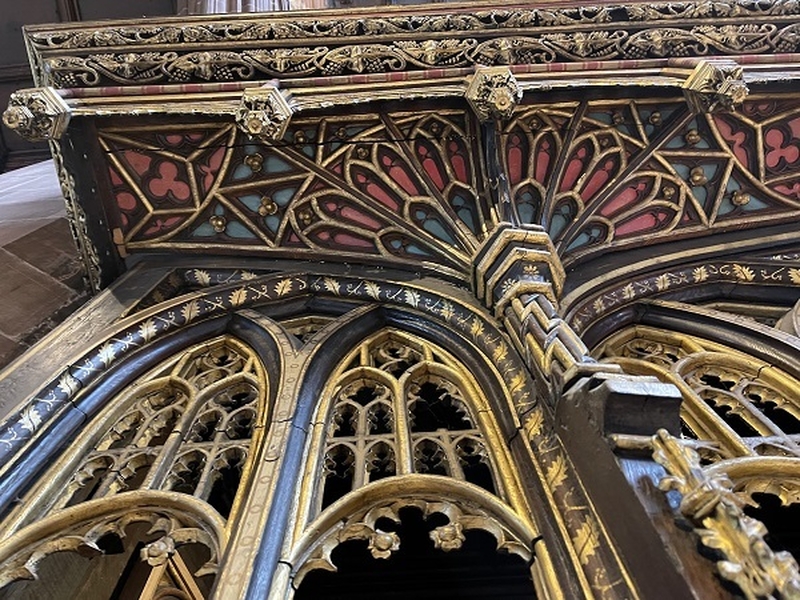
In the early 1500s, the choir was erected, which with the ceilings, reveal some of the finest late medieval wood carvings in the north of England. The style of architecture in the church is called Perpendicular, which is unique to England and is notable for its strong vertical lines in windows and piers.
There is a lot of fun in the woodwork. One of the carvings in the choir shows a sleeping pedlar being robbed by monkeys. On one side there is a monkey with a baby and on the other is one with a bottle. This is a urine sample. Doctors said that with a urine sample they could diagnose illness. This satire says you might as well trust your sample or your baby to a monkey and all the useless doctors achieve is to rob you.
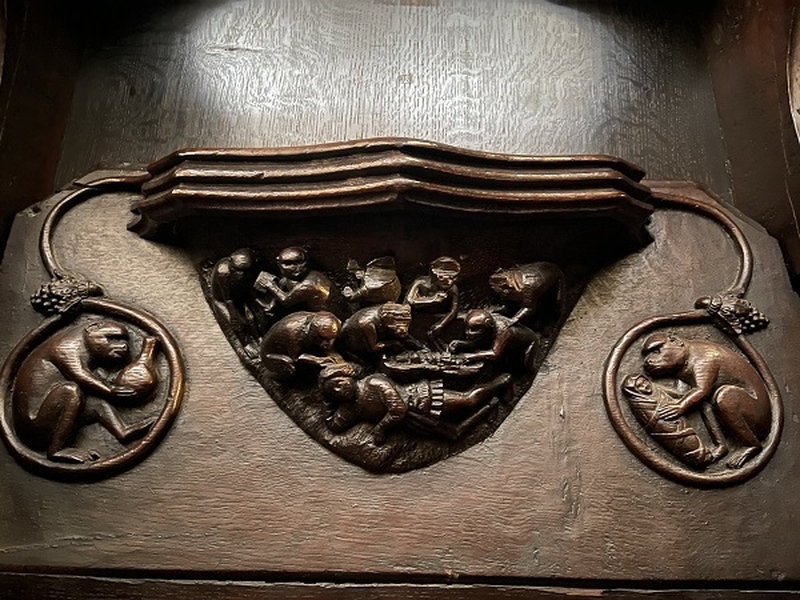
Those old medieval types loved their jokes. Also in the choir is the brass of John Huntington, the first warden of the Collegiate church who died in 1458. Straight ahead to the east over this brass is the Lady Chapel. This has an arch with a scene of hunting at one end and of beer or wine barrels, formerly called tuns, at the other end. Here we have a rebus, or architectural pun, on the surname of the first warden.
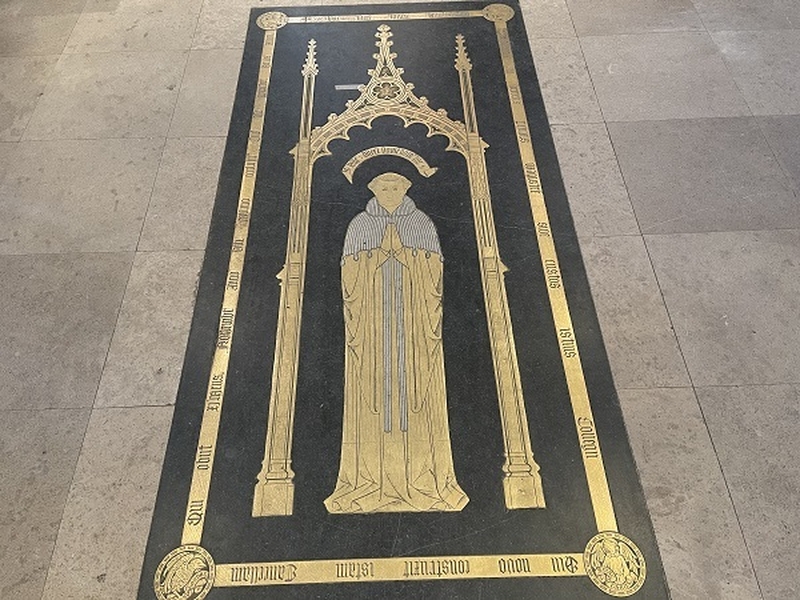
The most catastrophic event occurred on Sunday 22 December 1940 when the Cathedral received direct hits from German bombs. The windows acted like a safety valve and as they shattered, helped release the pressure of the blast. Partly because of this, most of the main structure of the Cathedral and miraculously, the woodwork, were preserved.
The post-WWII stained glass represents the best of the new decoration in the Cathedral, especially the spectacular Fire Window by Margaret Traherne in the Regimental Chapel of the Manchester Regiment to mark where the wartime bomb landed. By the way in the Books of Remembrance lining the walls is the name of one of the last casualties of WWI: the celebrated poet Wilfred Owen.
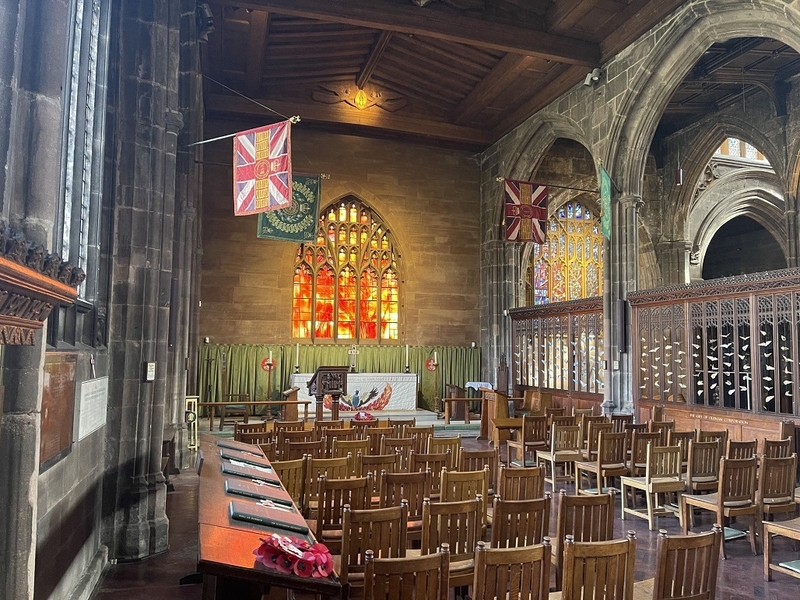
Perhaps the most important event was when to a packed church Thomas Clarkson delivered his crucial anti-slavery sermon in 1787. We wrote about this in our Short History of Manchester series.
Manchester Cathedral remains at the centre of Manchester life today and while daily religious life continues a further element has been added with the hosting of gigs from artists such as Alicia Keys, Elbow and Fun Lovin’ Criminals. There are also markets in the nave, dinners and a whole roster of events. Organ recitals using the majestic and beautiful instrument added in 2017 add to the public spirit of the place.
This is a return to tradition rather than a break with it, as in earlier times the nave of the building, which was the largest stone-built structure in the town, would have hosted much of the public life of Manchester.
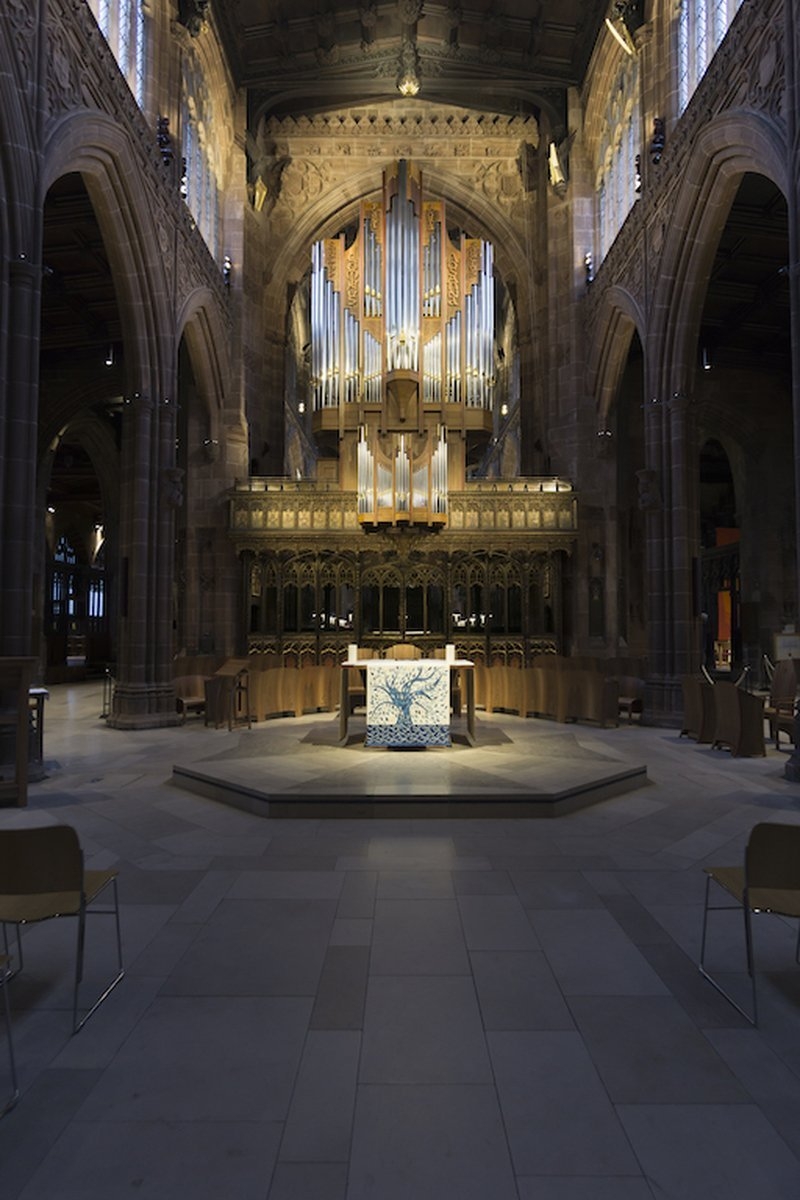
A lovely time to visit is during sung Evensong. There’s magic in the air then. Take that moment of stillness and breathe in the atmosphere as the choir voices soar. A perceptive mind might catch in the floating dust motes a sense of continuity and community with generations of Mancunians and visitors passing through this building, of baptisms, marriages, funerals: a host of lives lived, of joy and sadness, celebration and mourning.
Happy 600th birthday Manchester Cathedral.
Jonathan Schofield is conducting a fundraising Zoom tour for the Cathedral at 3pm, Saturday 22 May. To join please email event@jonathanschofieldtours.com and guests will be sent the Zoom invitation. The tour is free but contributions most welcome, all of which will go to the Cathedral Development Trust.


